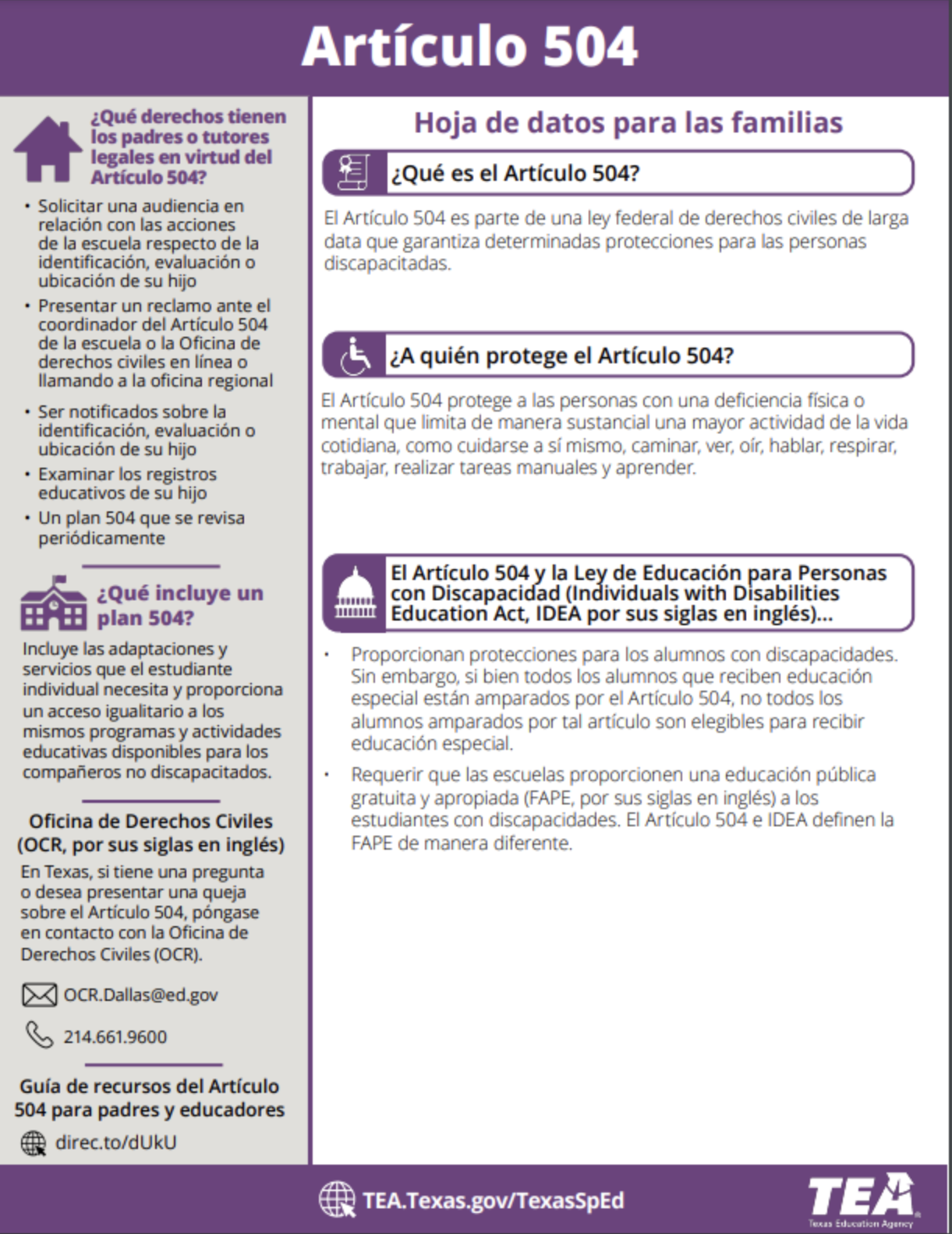The U.S. Department of Education enforces Section 504 of the Rehabilitation Act of 1973, as amended, (Section 504) a civil rights statute which prohibits discrimination against individuals with disabilities. The Office for Civil Rights (OCR) also enforces Title II of the Americans with Disabilities Act of 1990 (Title II), which extends this prohibition against discrimination to the full range of state and local government services, programs, and activities (including public schools) regardless of whether they receive any Federal financial assistance. The Americans with Disabilities Act Amendments Act of 2008 (Amendments Act), effective January 1, 2009, amended the Americans with Disabilities Act of 1990 (ADA) and included a conforming amendment to the Rehabilitation Act of 1973 (Rehabilitation Act) that affects the meaning of disability in Section 504. The standards adopted by the ADA were designed not to restrict the rights or remedies available under Section 504. The Title II regulations applicable to free appropriate public education issues do not provide greater protection than applicable Section 504 regulations. This guidance focuses primarily on Section 504.
Section 504 prohibits discrimination on the basis of disability in programs or activities that receive Federal financial assistance from the U.S. Department of Education. For more details, please refer to the United States Department of Education Section 504 Frequently Asked Questions document.
TEA's Section 504 Webinar and PowerPoint
Students Protected Under Section 504
Section 504 covers qualified students with disabilities who attend schools receiving Federal financial assistance. To be protected under Section 504, a student must be determined to: (1) have a physical or mental impairment that substantially limits one or more major life activities; or (2) have a record of such an impairment; or (3) be regarded as having such an impairment. Section 504 requires that school districts provide a free appropriate public education (FAPE) to qualified students in their jurisdictions who have a physical or mental impairment that substantially limits one or more major life activities. For more details, please refer to the United States Department of Education Section 504 Frequently Asked Questions document.
Evaluation
At the elementary and secondary school level, determining whether a child is a qualified disabled student under Section 504 begins with the evaluation process. Section 504 requires the use of evaluation procedures that ensure that children are not misclassified, unnecessarily labeled as having a disability, or incorrectly placed, based on inappropriate selection, administration, or interpretation of evaluation materials. For more details, please refer to the United States Department of Education Section 504 Frequently Asked Questions document.
Placement
Once a student is identified as being eligible for regular or special education and related aids or services, a decision must be made regarding the type of services the student needs. For more details, please refer to the United States Department of Education Section 504 Frequently Asked Questions document.
Procedural Safeguards
Public elementary and secondary schools must employ procedural safeguards regarding the identification, evaluation, or educational placement of persons who, because of disability, need or are believed to need special instruction or related services. For more details, please refer to the United States Department of Education Section 504 Frequently Asked Questions document.
How to File a Complaint
Online:
You may file a complaint with OCR using OCR’s electronic complaint form.
Mail or Facsimile:
You may mail or send by facsimile information to the address or phone number available at this link. You may use OCR’s Discrimination Complaint Form or write your own letter. If you write your own letter, please include:
The complainant’s name, address and, if possible (although not required), a telephone number where the complainant may be reached during business hours;
Information about the person(s) or class of persons injured by the alleged discriminatory act(s) (names of the injured person(s) are not required);
The name and location (city and state) of the institution that committed the alleged discriminatory act(s); and
A description of the alleged discriminatory act(s) in sufficient detail to enable OCR to understand what occurred, when it occurred, and the basis for the alleged discrimination.
Email:
You may email OCR’s Discrimination Complaint Form or your own signed letter to ocr@ed.gov. If you write your own letter, please include the information identified above


Resources from U.S. Department of Education - Office for Civil Rights (OCR):

